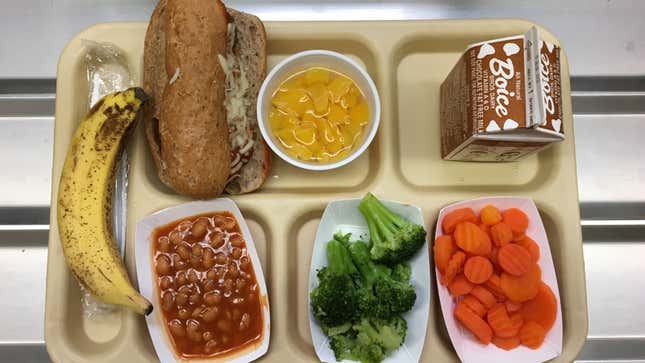Trump's Clampdown on Food Stamps Would Also Affect Kids Getting Free School Lunches
Politics

Half a million kids could lose their automatic qualification for free school lunches, thanks to the Trump administration’s latest attempt to “tighten” food stamp rules (read: strangle much-needed help to, literally, children without enough to eat).
The New York Times reported on this development, which the Trump administration didn’t exactly tout when they first rolled out their proposal to close a “loophole” where states can waive certain food stamp eligibility requirements and allow families with some assets to qualify. States do this because it doesn’t exactly provide a ladder out of poverty if you force people burn through any meager cash cushion before you provide any assistance, but of course the GOP is loudly touting one time a millionaire supposedly managed to finagle his way into benefits.
Now it turns out that the change has implications for school kids getting free lunches:
Right now, households that receive benefits or services from another federal welfare program, Temporary Assistance for Needy Families, are automatically eligible for food stamps in 39 states, the District of Columbia, Guam and the Virgin Islands. In some of those states, households with gross incomes up to 200 percent of the poverty line — which would be about $50,000 for a family of four — are automatically eligible for food stamps. Children in those households are automatically eligible for free school meals, too; over 8 million children were directly certified for free school meals in this way in the 2016-17 school year. Not all of those who automatically qualify for food stamps or free school meals necessarily receive them though.
And what that means for free school lunches:
Under the proposal, fewer families would automatically qualify for food stamps, and in turn, fewer children would get free school meals. Children in households with gross incomes between 185 percent and 200 percent of the poverty line would no longer be automatically eligible for any food assistance at school. And children in households with gross incomes between 130 percent and 185 percent of the poverty line would be eligible for only reduced-price meals. Families would be charged a maximum of 30 cents for breakfast and 40 cents for lunch.
“Even that reduced price fee is very, very burdensome on families that are struggling to make ends meet,” said Lisa Davis, senior vice president of the No Kid Hungry campaign.
There’s no such thing as a free lunch in this country unless you are a billionaire with an army of lawyers and accountants and lobbyists petitioning the Trump administration for tax cuts.